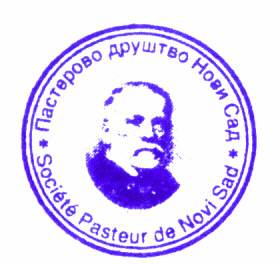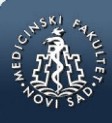md-medicaldata
Main menu:
- Naslovna/Home
- Arhiva/Archive
- Godina 2024, Broj 1
- Godina 2023, Broj 3
- Godina 2023, Broj 1-2
- Godina 2022, Broj 3
- Godina 2022, Broj 1-2
- Godina 2021, Broj 3-4
- Godina 2021, Broj 2
- Godina 2021, Broj 1
- Godina 2020, Broj 4
- Godina 2020, Broj 3
- Godina 2020, Broj 2
- Godina 2020, Broj 1
- Godina 2019, Broj 3
- Godina 2019, Broj 2
- Godina 2019, Broj 1
- Godina 2018, Broj 4
- Godina 2018, Broj 3
- Godina 2018, Broj 2
- Godina 2018, Broj 1
- Godina 2017, Broj 4
- Godina 2017, Broj 3
- Godina 2017, Broj 2
- Godina 2017, Broj 1
- Godina 2016, Broj 4
- Godina 2016, Broj 3
- Godina 2016, Broj 2
- Godina 2016, Broj 1
- Godina 2015, Broj 4
- Godina 2015, Broj 3
- Godina 2015, Broj 2
- Godina 2015, Broj 1
- Godina 2014, Broj 4
- Godina 2014, Broj 3
- Godina 2014, Broj 2
- Godina 2014, Broj 1
- Godina 2013, Broj 4
- Godina 2013, Broj 3
- Godina 2013, Broj 2
- Godina 2013, Broj 1
- Godina 2012, Broj 4
- Godina 2012, Broj 3
- Godina 2012, Broj 2
- Godina 2012, Broj 1
- Godina 2011, Broj 4
- Godina 2011, Broj 3
- Godina 2011, Broj 2
- Godina 2011, Broj 1
- Godina 2010, Broj 4
- Godina 2010, Broj 3
- Godina 2010, Broj 2
- Godina 2010, Broj 1
- Godina 2009, Broj 4
- Godina 2009, Broj 3
- Godina 2009, Broj 2
- Godina 2009, Broj 1
- Supplement
- Galerija/Gallery
- Dešavanja/Events
- Uputstva/Instructions
- Redakcija/Redaction
- Izdavač/Publisher
- Pretplata /Subscriptions
- Saradnja/Cooperation
- Vesti/News
- Kontakt/Contact
 Pasterovo društvo
Pasterovo društvo
- Disclosure of Potential Conflicts of Interest
- WorldMedical Association Declaration of Helsinki Ethical Principles for Medical Research Involving Human Subjects
- Committee on publication Ethics
CIP - Каталогизација у публикацији
Народна библиотека Србије, Београд
61
MD : Medical Data : medicinska revija = medical review / glavni i odgovorni urednik Dušan Lalošević. - Vol. 1, no. 1 (2009)- . - Zemun : Udruženje za kulturu povezivanja Most Art Jugoslavija ; Novi Sad : Pasterovo društvo, 2009- (Beograd : Scripta Internacional). - 30 cm
Dostupno i na: http://www.md-medicaldata.com. - Tri puta godišnje.
ISSN 1821-1585 = MD. Medical Data
COBISS.SR-ID 158558988
UVOĐENJE NOVE ZDRAVSTVENE TEHNOLOGIJE U REHABILITACIONI TRETMAN DECE – ROBOT ASISTIRANA TEHNOLOGIJA (LOKOMAT PRO SISTEM)
/
INTRODUCTION OF NEW HEALTH TECHNOLOGY IN THE REHABILITATION TREATMENT OF CHILDREN – ROBOT ASSISTED TREADMILL THERAPY (LOKOMAT PRO SYSTEM)
Authors
Jelena Lazić1,2, Branislava Brestovački Svitlica1,2 , Mirjana Stojšić1,2
UDK: 007.52:615.8-053.2 The paper was received / Rad primljen: 01.06.2021. Accepted / Rad prihvaćen: 16.06.2021. Sažetak Lokomat Pro sistem je uređaj koji uz pomoć egzoskeletnog robota za hodanje na pokretnoj traci, kao i ortoza koje su prilagodljive za svakog pacijenta, uz video igre i na interaktivan način podstiče pacijenta da uradi određenu vrstu pokreta uz aktivaciju ciljanih mišićnih grupa, čime se ubrzava i pospešuje oporavak. Koristi se u rehabilitaciji pacijenata koji imaju poteškoće u hodu, prouzrokovane oboljenjima ili povredama centralnog i perifernog nervnog sistema. Istraživanja su pokazala da primena robot asistitrane terapije hoda pomoću Lokomata dovodi do poboljšanja lokomotornih funkcija, povećava se broj ponovljenih pokreta, poboljšava se simetrija i ravnoteža, povećava se izdržljivost kardiovaskularnog sistema, kao i samostalnost pacijenata (naročito u ranoj fazi rehabilitacije), smanjuje se spastičnost donjih ekstremiteta, poboljšava funkcionisanje pri aktivnostima svakodnevnog života, dovodi do smanjenja inaktivitetne atrofije, straha pacijenata (npr. od pada), uvežbava se balans, pokretljivost zglobova i izvodi istezanje muskulature u cilju podsticanja neuroplastičnog mozga. Ideja o uvođenju robot asistirane tehnologije u rehabilitacioni tretman kod dece, ima nameru da doprinese unapređenju kvaliteta dečje zdravstvene zaštite u Republici Srbiji.
Ključne reči: Lokomat Pro, rehabilitacija, terapija, nove tehnologije Abstract The Locomat Pro System is a device that interactively encourages the patient to make a certain type of movement by activating target muscle groups, with the help of an exosceleton robot for walking on a threadmill. Thus it accelerates recovery. It is used in the rehabilitation of patients who have difficulty walking, caused by diseases or injuries of the central and peripheral nervous system. Studies have shown that the use of robot-assisted gait therapy using Lokomat improves locomotor functions, increases the number of repeated movements, improves symmetry and balance, increases endurance of the cardiovascular system, as well as patient independence (especially in early rehabilitation), reduces lower extremity spasticity, improves functioning in everyday life activities, leads to a reduction in physical inactivity-induced atrophy, patients' fear (eg of falling), improves balance, joint mobility and performs stretching of muscles to stimulate the brain neuroplasticity. The idea of introducing robot-assisted technology in rehabilitation treatment for children, intends to contribute to improving the quality of children's health care in the Republic of Serbia. Lokomat Pro, rehabilitation, therapy, new technologies References: PDF04-MD-Vol 13 No 2 Jun 2021_Lazic et al.
1Instititut za zdravstvenu zaštitu dece i omladine Vojvodine;
2Univerzitet u Novom Sadu, Medicinski fakultet
Correspondence to:
Jelena Lazić
University of Novi Sad, Faculty of Medicine
Hajduk Veljkova 3, 21000 Novi Sad, Serbia
telefon: 063/8247-088
e-mail: jelalazic69@gmail.com
Keywords:
 Medicinski fakultet
Medicinski fakultet